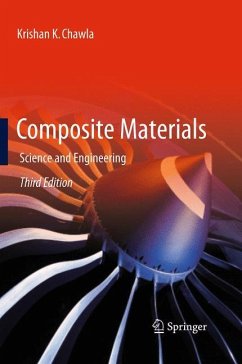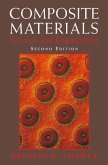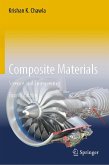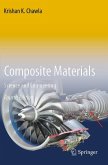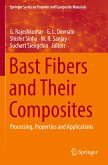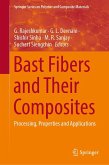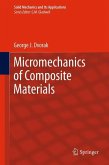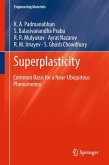The third edition of Krishan Chawla's widely used textbook, Composite Materials, offers integrated and completely up-to-date coverage of composite materials. The book focuses on the triad of processing, structure, and properties, while providing a well-balanced treatment of the materials science and mechanics of composites.
In this edition of Composite Materials, revised and updated throughout, increasing use of composites in industry (especially aerospace and energy) and new developments in the field are highlighted. There is a new chapter on non-conventional composites, which covers polymer, metal and ceramic matrix nanocomposites, self-healing composites, self-reinforced composites, biocomposites and laminates made of metals and polymer matrix composites. The third edition, featuring all figures in color, also includes new solved examples and problems as well as increased coverage of:
Carbon/carbon brakes. Composites for civilian aircraft and jet engines. Second generation high-temperature superconducting composites. Composites for use in windmill blades. WC/metal particulate composites.
Examples of practical applications in various fields are given throughout the book, and extensive references to the literature are provided. The book is intended for use in graduate and upper-division undergraduate courses, and as a reference for the practicing engineers and researchers in industry and academia.
In this edition of Composite Materials, revised and updated throughout, increasing use of composites in industry (especially aerospace and energy) and new developments in the field are highlighted. There is a new chapter on non-conventional composites, which covers polymer, metal and ceramic matrix nanocomposites, self-healing composites, self-reinforced composites, biocomposites and laminates made of metals and polymer matrix composites. The third edition, featuring all figures in color, also includes new solved examples and problems as well as increased coverage of:
Carbon/carbon brakes. Composites for civilian aircraft and jet engines. Second generation high-temperature superconducting composites. Composites for use in windmill blades. WC/metal particulate composites.
Examples of practical applications in various fields are given throughout the book, and extensive references to the literature are provided. The book is intended for use in graduate and upper-division undergraduate courses, and as a reference for the practicing engineers and researchers in industry and academia.
From the reviews:
"... Well-organized, up-to-date, informative ... filled with useful tables, graphs, references, suggested readings, and illustrations. The book is well designed for its intended market ..." American Scientist
From reviews of the first edition:
"covers polymer, metal, and ceramic matrix composites in a well-organized, up-to-date manner. It is filled with useful tables, graphs, references, suggested readings and illustrations." -- American Scientist
"Overall, this is an excellent book for composite materials research. It can be used as a text book for undergraduate seniors,... and as a reference book for engineers." -- Applied Mechanics Review
MRS BULLETIN
"Prof. Chawla has attempted the formidable task of including essentially all types of fiber composite materials and their properties in a single text. By employing an economic writing style and carefully selected references, figures, and suggested readings, he has successfully produced a relatively short but thorough 292-page book...Clear, concise, and complete, this book is an excellent up-to-date introduction to fiber composite materials. I would recommend it for a first course in composite materials at the advanced undergraduate or first-year graduate level. It is also valuable for the practicing engineer or scientist who wishes to become familiar with the growing field of fiber composites."
SAMPE JOURNAL
"Readers will find this valuable text to be current, well-written and lucid. In addition each chapter contains many references and suggested reading material."
IEEE ELECTRICAL INSULATION MAGAZINE
"This book covers thoroughly the broad base of composites. The book is divided into three parts and twelve chapters, plus a very useful set of appendices and problems."
CHOICE MAGAZINE
"...he uses a conversational style often more intuitive than that used in other works...useful as a coursesupplement, or as a resource for students already exposed to the subject via a more traditional approach...In summary, a valuable addition to an undergraduate library collection."
"... Well-organized, up-to-date, informative ... filled with useful tables, graphs, references, suggested readings, and illustrations. The book is well designed for its intended market ..." American Scientist
From reviews of the first edition:
"covers polymer, metal, and ceramic matrix composites in a well-organized, up-to-date manner. It is filled with useful tables, graphs, references, suggested readings and illustrations." -- American Scientist
"Overall, this is an excellent book for composite materials research. It can be used as a text book for undergraduate seniors,... and as a reference book for engineers." -- Applied Mechanics Review
MRS BULLETIN
"Prof. Chawla has attempted the formidable task of including essentially all types of fiber composite materials and their properties in a single text. By employing an economic writing style and carefully selected references, figures, and suggested readings, he has successfully produced a relatively short but thorough 292-page book...Clear, concise, and complete, this book is an excellent up-to-date introduction to fiber composite materials. I would recommend it for a first course in composite materials at the advanced undergraduate or first-year graduate level. It is also valuable for the practicing engineer or scientist who wishes to become familiar with the growing field of fiber composites."
SAMPE JOURNAL
"Readers will find this valuable text to be current, well-written and lucid. In addition each chapter contains many references and suggested reading material."
IEEE ELECTRICAL INSULATION MAGAZINE
"This book covers thoroughly the broad base of composites. The book is divided into three parts and twelve chapters, plus a very useful set of appendices and problems."
CHOICE MAGAZINE
"...he uses a conversational style often more intuitive than that used in other works...useful as a coursesupplement, or as a resource for students already exposed to the subject via a more traditional approach...In summary, a valuable addition to an undergraduate library collection."

